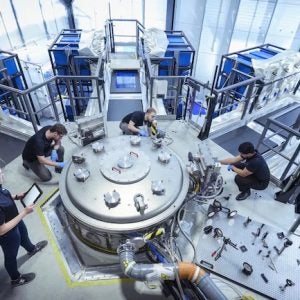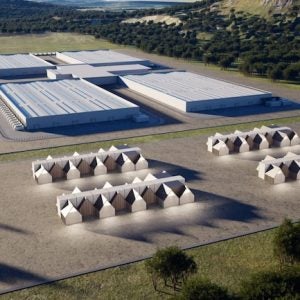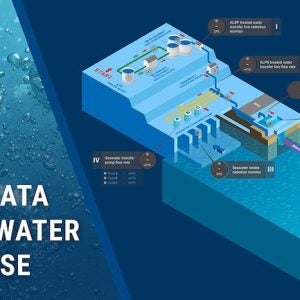 Italian oil and gas company Eni on 4 May signed a memorandum of understanding with the National Research Council (CNR) covering joint research in nuclear fusion, water, agriculture and the Arctic ecosystem. Eni and CNR are to invest more than €20m ($28m) over five years to establish a fusion research centre in Gela, Sicily – one of four joint research centres to be set up under the agreement.
Italian oil and gas company Eni on 4 May signed a memorandum of understanding with the National Research Council (CNR) covering joint research in nuclear fusion, water, agriculture and the Arctic ecosystem. Eni and CNR are to invest more than €20m ($28m) over five years to establish a fusion research centre in Gela, Sicily – one of four joint research centres to be set up under the agreement.
“This agreement represents a significant step forward for Eni towards the development and implementation of increasingly efficient technologies capable of creating sustainable and accessible energy for more and more people", stated Eni CEO Claudio Descalzi. He added that Eni has long been committed to supporting scientific research for the realisation of concrete and scientifically sound solutions to support the diversification of the energy mix towards increasingly sustainable sources. Joint working groups will be set up to define the operation of the centres, the projects to be launched in the coming five years, the distribution of resources, and to draw up a cooperation agreement for joint management of the centres. Joint strategic workshops will be organised. The first will be held in September.
Earlier Eni said it was considering stepping up its investment in nuclear fusion. The company is already involved in a collaboration the US Massachusetts Institute of Technology (MIT), which has set up a new private company, Commonwealth Fusion Systems (CFS), in which Eni has shares. CFS in April, announced an initial investment of $30m to develop a fusion reactor prototype within 15 years, after which Eni’s head of development operations and technology, Roberto Casula, said Eni might increase its investment in the project.
Casula estimated that it would cost $3bn to develop a 200MWe fusion reactor by 2033 and said CFS is looking to raise more funds and to draw up an overall investment agreement with a range of financiers, Reuters reported.
The MIT team has built a bedroom-sized experimental tokamak reactor and plans to develop a larger-scale system of superconducting magnets within three years and to build a fusion reactor within eight before finally, within 15 years, completing a nuclear-fusion power plant generating electricity. Bob Mumgaard, CEO of CFS, said the MIT project differed from the ITER reactor under construction in France with respect to their magnet technologies, adding that MIT’s system enabled it to contain the plasma in a smaller chamber.
For Eni, its investment in nuclear fusion represents a small risk for a potentially big discovery, a familiar strategy followed by its upstream division in exploring for oil and gas.
Photo: Eni and Italy's National Research Council sign MOU for joint research on fusion






